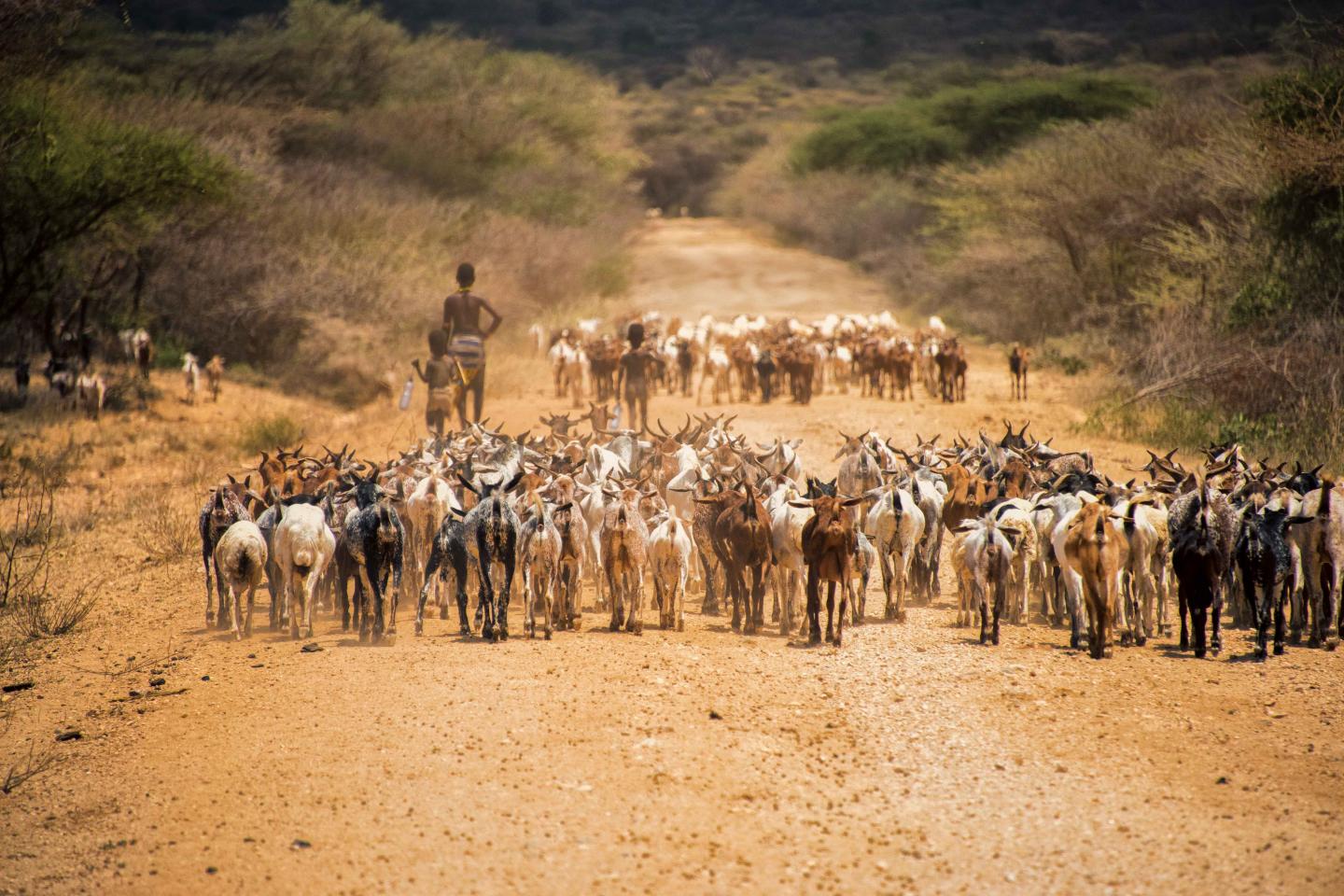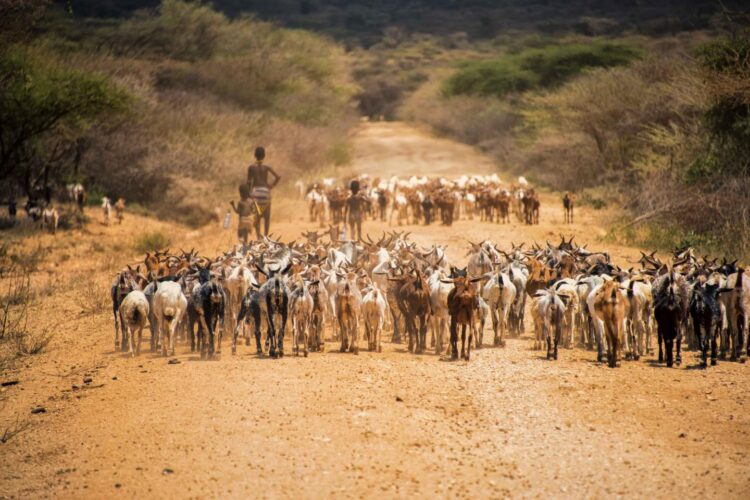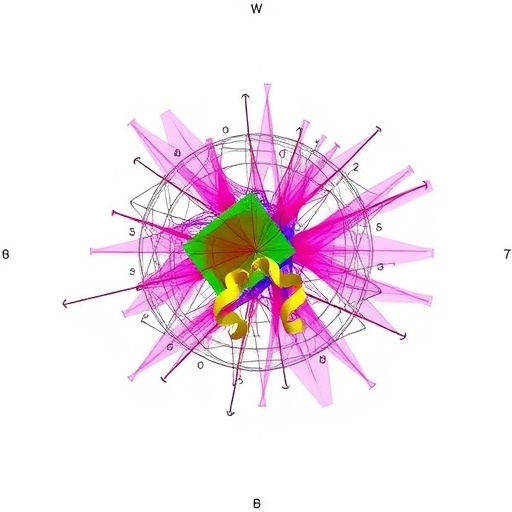
Credit: Rod Waddington/Flickr
UNIVERSITY PARK, Pa. — The risk of transmitting the virus PPRV, which produces a highly infectious and often fatal disease in sheep and goats, does not appear to vary significantly by an animal’s age, unlike its sibling virus measles, which is most prominent in children. Instead, animals in areas where livestock are the sole source of an owner’s livelihood are more likely to become infected compared to herds whose owners rely on a mix of livestock and agriculture.
In a new study, an international team including Penn State researchers explored the rate of PPRV infection across ages and livestock management styles of sheep and goats, as well as in cattle, which do not express symptoms but can be infected by the virus. The study, which appears online in the journal Viruses, provides important insight into how we might target PPRV control efforts and builds on the team’s previous research highlighting the importance of livestock management style in transmission.
“Infection risk varies by age for many well-known diseases, and knowing this can allow us to target high-risk age groups with control efforts, like vaccination,” said Catherine Herzog, epidemiologist and graduate student in biology at the Center for Infectious Disease Dynamics at Penn State and lead author of the paper. “For example, while influenza can infect people of all ages, it often has greater impact among the youngest and the oldest members of a population. Similarly, Rinderpest – an animal disease closely related to PPRV – was a scourge on husbandry and a major killer of young and old cattle for centuries until it was finally eradicated through animal vaccination in the early 2000s. Our study was designed to determine if age is a key risk factor of PPRV transmission so that we can better target vaccination campaigns to control this virus.”
The sheep and goat plague virus, more formally known as peste des petits ruminants virus, is currently present in Africa, the Middle East, and Asia, where livestock keepers rely heavily on sheep and goats for their livelihood. In 2015, the Food and Agricultural Organization (FAO) and the World Animal Health Organization (OIE) launched a global campaign to eradicate PPRV by 2030. While an affordable vaccine exists, it is not always available in rural areas, and research can help direct efforts to get the vaccine to high-risk populations.
The researchers studied the rate at which animals became infected–the force of infection–among different ages and livestock management styles in Tanzania. The research showed that while the force of infection was not significantly related to an animal’s age, it was greater in animals from pastoral areas, where people rely almost solely on livestock, compared to agropastoral areas, where people rely on a mix of livestock and agriculture.
“Our results suggest that no particular age group bears the burden of infection,” said Herzog. “Sheep and goats have some protection from the virus when they are first born if their mother was vaccinated or had recovered from previous infection with the virus. Therefore, it may be most reasonable to target animals for vaccination when that maternal immunity wears off, though additional studies are needed to determine the timing of this biological process so vaccines are given at the correct time.”
“These findings align with our previous results that suggest that management style of livestock plays an important role in PPRV infection risk,” said Ottar Bjørnstad, Distinguished Professor of Entomology and Biology and J. Lloyd and Dorothy Foehr Huck Chair of Epidemiology at Penn State, and a member of the research team. “We plan to investigate how specific husbandry practices–herd size, herd age structure, contact rates among livestock and wildlife, and access to veterinary service–affect risk of transmission so that we can better target control efforts of PPRV, which is currently a priority for world-wide elimination.”
The researchers also found evidence of prior PPRV infection in cattle, which was much higher than previous reports. Co-author Brian Willett at the University of Glasglow determined that previous testing kits had a low sensitivity in cattle, and should thus be refined to improve future monitoring. In this study, when the researchers adjusted calculations for the sensitivity and specificity of tests, evidence of prior infection in cattle increased, doubling in the oldest age group.
“These results suggest that cattle may play a more important role in PPRV transmission than previously realized,” said Bjørnstad. “Because the goal is to eradicate the virus, we need to better understand the role of PPRV transmission among cattle and other species that may carry the disease even though they are not the primary hosts.”
###
In addition to Herzog, Bjørnstad, and Willett, the research team includes Isabella Cattadori, Vivek Kapur, and Peter Hudson at Penn State; Will de Glanville, Sarah Cleaveland at the University of Glasglow in the United Kingdom; Joram Buza at the Nelson Mandela African Institute of Science and Technology in Tanzania; and Emmanuel Swai at the Ministry of Livestock and Fisheries in Tanzania.
This research was supported by the Bill & Melinda Gates Foundation Program for Enhancing the Health and Productivity of Livestock, the Biological Sciences Research Council, the Department for International Development, the Economic and Social Research Council, the Medical Research Council, the Natural Environment Research Council and the Defense Science & Technology Laboratory, under the Zoonoses and Emerging Livestock Systems (ZELS) programme.
Media Contact
Gail McCormick
[email protected]
Original Source
http://science.
Related Journal Article
http://dx.





